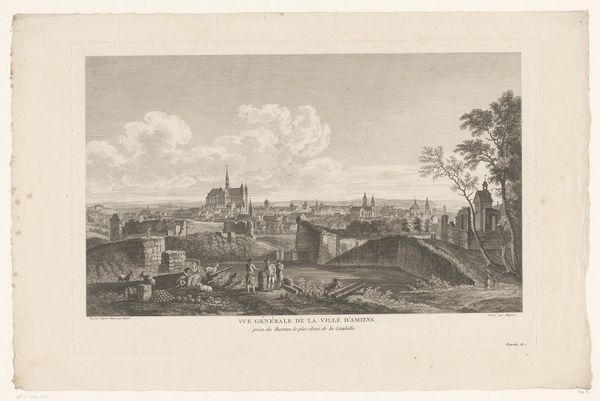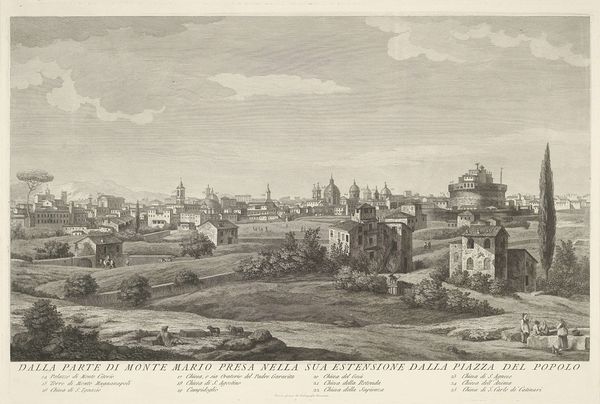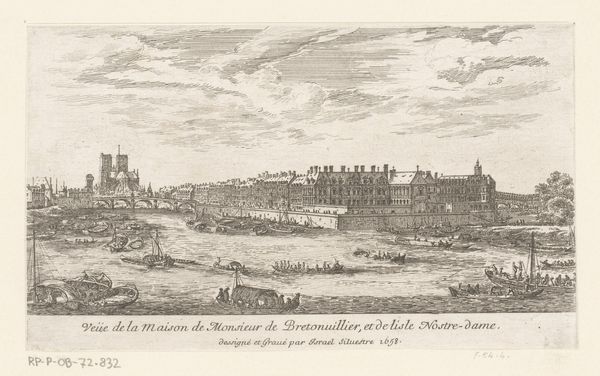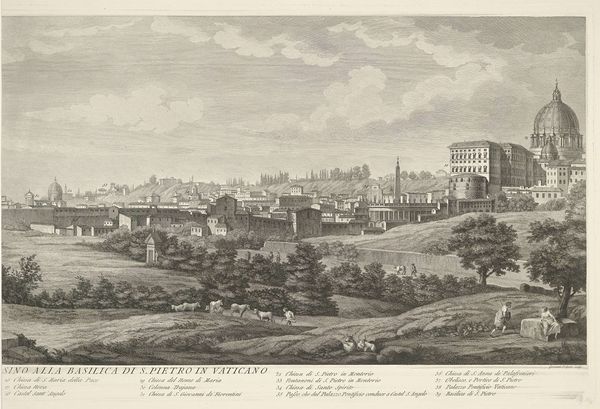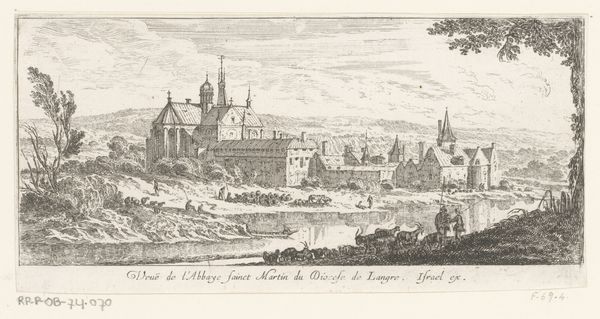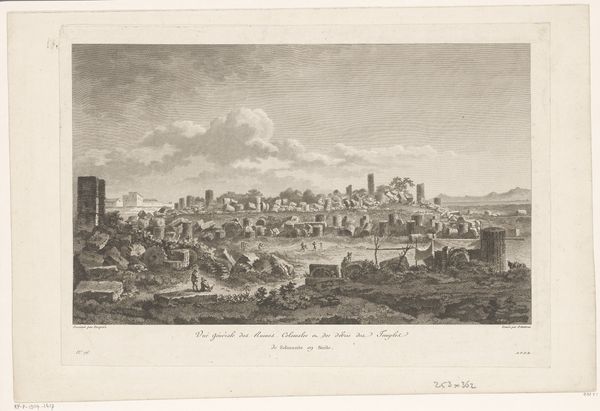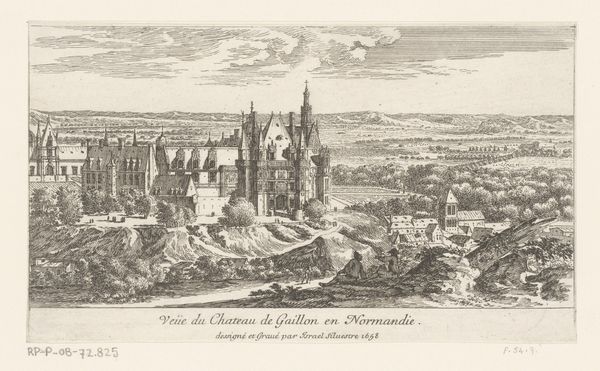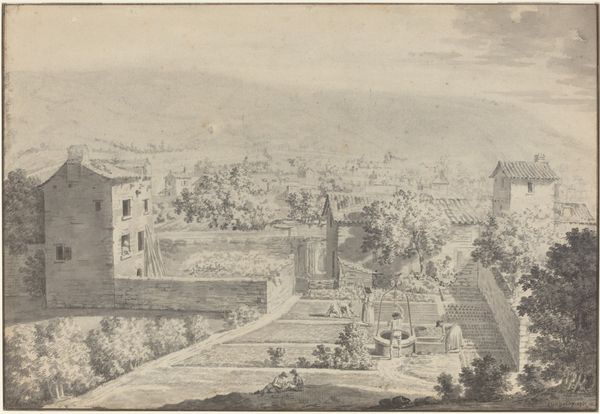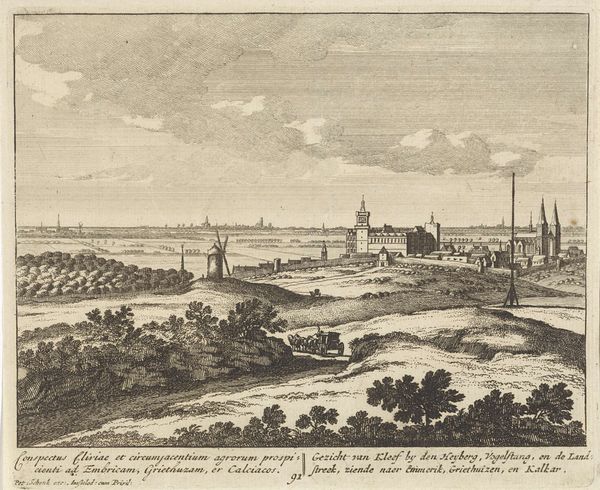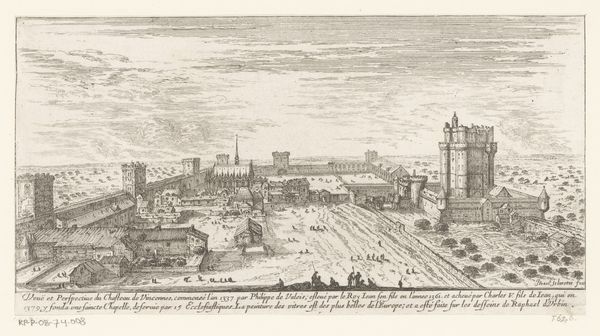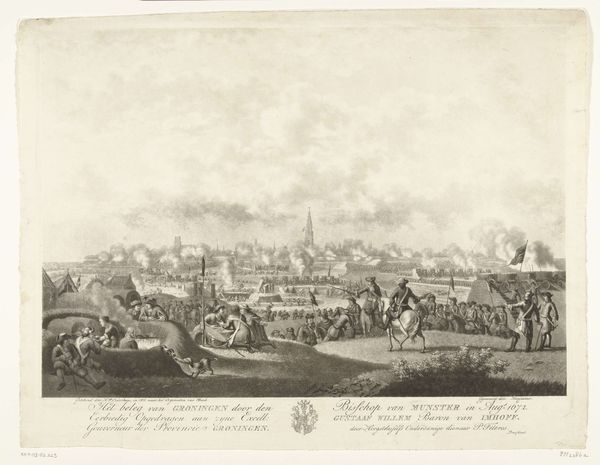
print, etching, engraving
#
pencil drawn
#
neoclacissism
#
aged paper
#
light pencil work
# print
#
etching
#
pencil sketch
#
old engraving style
#
landscape
#
cityscape
#
pencil work
#
engraving
#
historical font
Dimensions: height 476 mm, width 700 mm
Copyright: Rijks Museum: Open Domain
Editor: This is *Panorama van de stad Rome (linker deel)*, or *Panorama of the city of Rome (left part)*, an etching and engraving by Giovanni Volpato, dating from 1743 to 1803. It gives me a feeling of historical distance; everything looks precise, carefully laid out. What catches your eye when you look at this piece? Curator: The immediate draw is the meticulously constructed composition. Volpato utilizes a sophisticated system of perspective, guiding the viewer’s eye from the foreground – the somewhat darker and more detailed lower section – toward the more diffused and lighter city skyline in the distance. Note the almost geometric arrangement of the landscape; how would you describe the tonal range deployed? Editor: Well, the tonal range is fairly narrow; it's almost monochromatic, consisting mainly of light greys and faded whites. It really flattens the space. Is that a deliberate choice to emphasize the architecture? Curator: Precisely. The restricted palette and delicate hatching technique serve to highlight the architectural forms and the clear delineation of space. Notice how the architectural elements—the domes, the towers— punctuate the skyline. They create a rhythmic sequence that is quite pleasing to the eye. The print offers a study of contrasting textures—smooth versus rough, detailed versus sparse. How do these textures interact, do you think? Editor: The rough textures in the foreground and subtle pencil strokes direct my eyes to move throughout the landscape. It highlights that contrast you noted! So it’s more than just a pretty picture; the composition creates relationships through different elements that draw the eye to engage more deeply. Curator: Indeed. By deconstructing its formal elements we can analyze the success with which Volpato’s landscape has managed to depict an idealized rendition of Rome using purely structural qualities. Editor: This has given me a deeper appreciation for how printmaking can be used to both document and interpret a scene, paying close attention to the formal elements. Thanks!
Comments
No comments
Be the first to comment and join the conversation on the ultimate creative platform.
